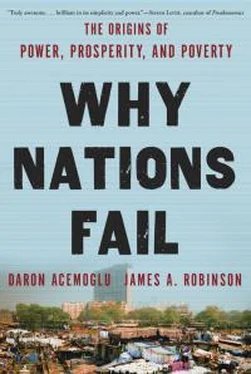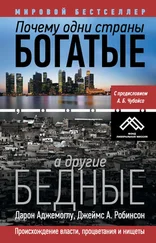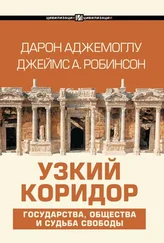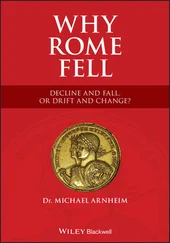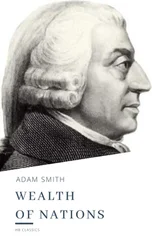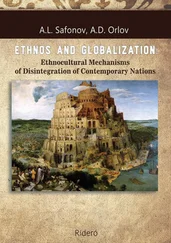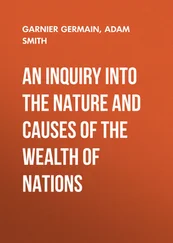(1963) and Hill (1961, 1980). See also Tawney’s (1941) thesis about how the state building project of Henry VIII changed the English social structure.
The text of the Magna Carta is available online at the Avalon Project, at avalon.law.yale.edu/medieval/magframe.asp.
Elton (1953) is the seminal work on the development of state institutions under Henry VIII, and Neale (1971) relates these to the evolution of parliament.
On the Peasants’ Revolt, see Hilton (2003). The quote from Hill on monopolies is from Hill (1961), p. 25. On Charles I’s period of “personal rule,” we follow Sharp (1992). Our evidence on how different groups and regions sided either for or against Parliament comes from Brunton and Pennington (1954), Hill (1961), and Stone (2001). Pincus (2009) is fundamental on the Glorious Revolution and discusses many of the specific changes in policies and economic institutions; for example, the repeal of the Hearth Tax and the creation of the Bank of England. See also Pincus and Robinson (2010). Pettigrew (2007, 2009) discusses the attack on monopolies, including the Royal African Company, and our data on petitioning comes from his papers. Knights (2010) emphasizes the political importance of petitioning. Our information on Hoare’s Bank comes from Temin and Voth (2008).
Our information about Superviser Cowperthwaite and the excise tax bureaucracy comes from Brewer (1988).
Our overview of the economic history of the Industrial Revolution rests on Mantoux (1961), Daunton (1995), Allen (2009a), and Mokyr (1990, 2009), who provide details on the famous inventors and inventions we discuss. The story about the Baldwyn family is from Bogart and Richardson (2009, 2011), who stress the connection between the Glorious Revolution, the reorganization of property rights, and the construction of roads and canals. On the Calicoe Acts and Manchester Acts, see O’Brien, Griffiths, and Hunt (1991), which is the source of the quotes from the legislation. On the dominance of new people in industry, see Daunton (1995), chap. 7, and Crouzet (1985).
Our account of why the major institutional changes first took place in England is based on Acemoglu, Johnson, and Robinson (2005a) and Brenner (1976). The data on the number of independent merchants and their political preferences come from Zahedieh (2010).
CHAPTER 8 : NOT ON OUR TURF
On the opposition to the printing press in the Ottoman Empire, see Savage-Smith (2003) pp. 656–59. Comparative historical literacy comes from Easterlin (1981).
Our discussion of political institutions of Spain follows Thompson (1994a, 1994b). For evidence on the economic decline of Spain over this period, see Nogal and Prados de la Escosura (2007).
Our discussion of the impediments to economic development in Austria-Hungary follows Blum (1943), Freudenberger (1967), and Gross (1973). The quotation from Maria Theresa comes from Freudenberger, p. 495. All other quotations from Count Hartig and Francis I are from Blum. Francis’s reply to the delegates from the Tyrol is quoted from Jászi (1929), pp. 80–81. The comment of Friedrich von Gentz to Robert Owen is also quoted from Jászi (1929), p. 80. The experience of the Rothschilds in Austria is discussed in chap. 2 of Corti (1928).
Our analysis of Russia follows Gerschenkron (1970). The quotation from Kropotkin is from p. 60 of the 2009 edition of his book. The conversation between Nicholas and Mikhail is quoted from Saunders (1992), p. 117. Kankrin’s quote on railways is in Owen (1991), pp. 15–16.
The speech by Nicholas to the manufacturers is reproduced from Pintner 967), p. 100.
The quote from A. A. Zakrevskii is from Pintner (1967), p. 235.
On Admiral Zheng, see Dreyer (2007). The economic history of early Modern China is covered by Myers and Wang (2002). The quote from T’ang Chen is quoted from Myers and Wang, pp. 564–65.
See Zewde (2002) for an overview of the relevant Ethiopian history. The data on how extractive Ethiopia has been historically come from Pankhurst (1961), as do all the quotes we reproduce here.
Our description of Somali institutions and history follows Lewis (1961, 2002). The heer of the Hassan Ugaas is reproduced on p.177 of Lewis (1961); our description of a feud comes from chap. 8 of Lewis (1961), where he reports many other examples. On the Kingdom of Taqali and writing, see Ewald (1988).
CHAPTER 9 : REVERSING DEVELOPMENT
Our discussion of the takeover of Ambon and Banda by the Dutch East India Company and the company’s negative effect on the development of Southeast Asia follows Hanna (1978) and particularly Reid (1993), chap. 5. The quotes from Reid on Tomé Pires are from p. 271; the Dutch factor in Maguindanao, p. 299; the sultan of Maguindanao, pp. 299–300. Data on the impact of the Dutch East India Company on the price of spices come from O’Rourke and Williamson (2002).
A definitive overview of slavery in African society and the impact of the slave trade is Lovejoy (2000). Lovejoy, p. 47, Table 31, reports consensus estimates of the extent of the slave trade. Nunn (2008) provided the first quantitative estimates of the impact of the slave trade on African economic institutions and economic growth. The data on firearms and gunpowder imports are from Inikori (1977). The testimony of Francis Moore is quoted from Lovejoy (2000), pp. 89–90. Law (1977) is a seminal study of the expansion of the Oyo state. The estimates of the impact of the slave trade on population in Africa are taken from Manning (1990). Lovejoy (2000), chap. 8, the essays in Law (1995), and the important book of Austin (2005) are the basis for our discussion of the analysis of the period of “legitimate commerce.” Data on the proportion of Africans who were slaves in Africa comes from Lovejoy (2000), e.g., p. 192, Table 9.2.
Data on labor in Liberia is from Clower, Dalton, Harwitz, and Walters (1966).
The dual economy idea was developed by Lewis (1954). Fergusson (2010) develops a mathematical model of the dual economy. The notion that this was a creation of colonialism was first proposed in the seminal collection of essays edited by Palmer and Parsons (1977). Our account of South Africa is based on Bundy (1979) and Feinstein (2005).
The Moravian missionary is quoted in Bundy (1979), p. 46, and John Hemming is quoted in Bundy, p. 72. The spread of land ownership in Griqualand East is from Bundy, p. 89; the exploits of Stephen Sonjica are from Bundy, p. 94; the quote from Matthew Blyth is from p. 97; and the quote from a European observer in Fingoland 1884 is from Bundy, pp. 100–101. George Albu is quoted in Feinstein (2005), p. 63; secretary for native affairs is quoted from Feinstein, p. 45; and Verwoerd is quoted from Feinstein, p. 159. Data on the real wages of African gold miners are from p. 66 of Wilson (1972). G. Findlay is quoted in Bundy (1979), p. 242.
The notion that the development of the rich countries of the West is the mirror image of the underdevelopment of the rest of the world was originally developed by Wallertsein (1974–2011), though he emphasizes very different mechanisms than we do.
CHAPTER 10 : THE DIFFUSION OF PROSPERITY
This chapter builds heavily on our previous research with Simon Johnson and Davide Cantoni: Acemoglu, Johnson, and Robinson (2002) and Acemoglu, Cantoni, Johnson, and Robinson (2010, 2011).
Our discussion of the development of early institutions in Australia follows the seminal work of Hirst (1983, 1988, 2003) and Neal (1991). The original manuscript of the writ issued to Judge Collins is available (thanks to the Macquarie University Law School in Australia) at www.law.mq.edu.au/scnsw/html/Cable%20v%20Sinclair,%201788.htm.
Macarthur’s characterization of Wentworth’s supporters is quoted from Melbourne (1963), pp. 131–32.
Читать дальше
